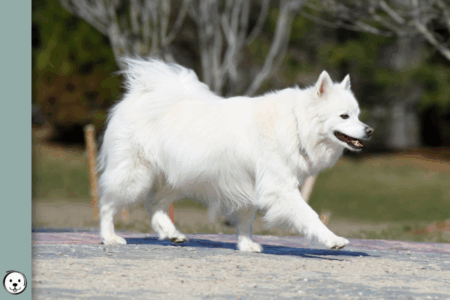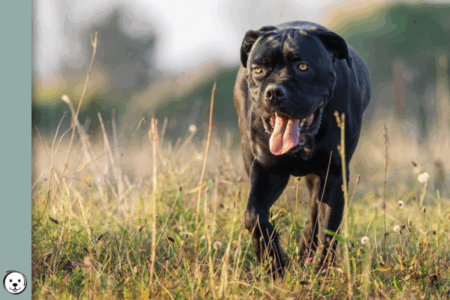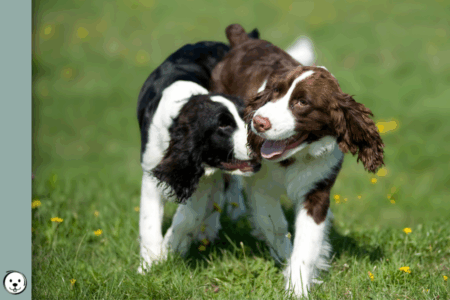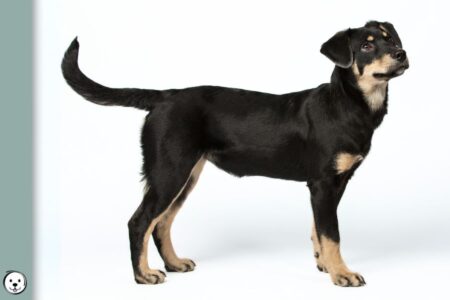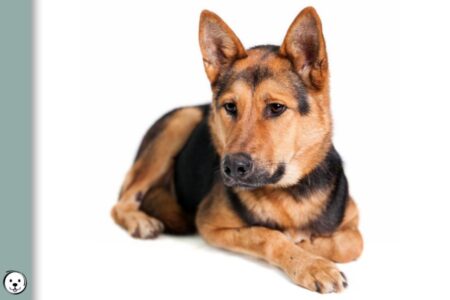A recessive black dog has a solid eumelanin-pigmented coat. Since this uniform pattern is caused by a recessive loss-of-function variant at the A-Locus it is called recessive black.
What is Recessive Black?
A recessive black dog lost the ability to switch from eumelanin to phaeomelanin production. Instead, he will have a solid black, blue, liver, or lilac coloration in all pigmented areas.
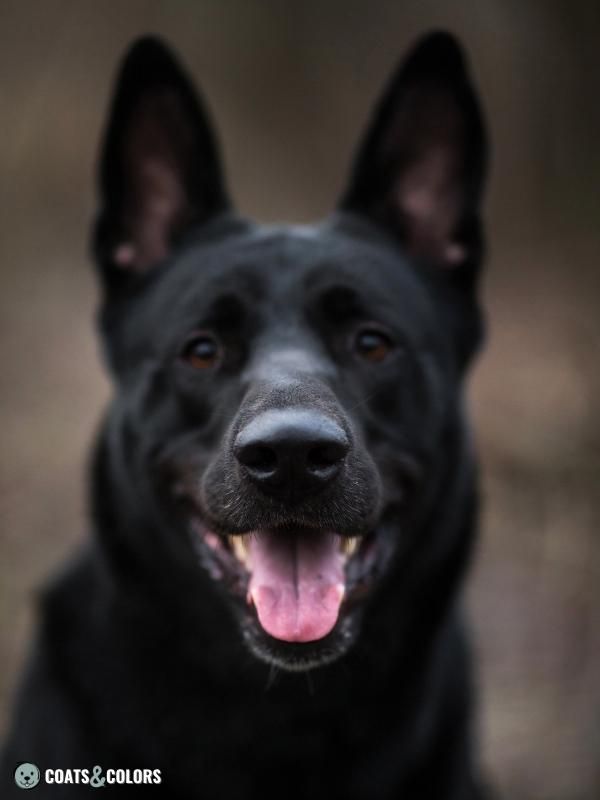
Since black is the wild type color of eumelanin pigment it is often used as a placeholder for all the colors eumelanin can have. So a recessive black dog can actually be solid black, liver, blue, or isabella/lilac!
Sometimes recessive black can’t stop all phaeomelanin production and dogs can still produce some smutty or faint tan markings on the paws or lower legs.
The a allele
Recessive black got its name to better distinguish between this pattern at the A-Locus and dominant black found at the K-Locus.
To express this phenotype a dog can’t be recessive red (e/e) or dominant black (KB/-) at the same time. So the E-Locus and K-Locus control if recessive black can be expressed.
Much has changed in our understanding of the A-Locus in recent years. But not much has changed regarding our explanation of recessive black:
This solid-colored phenotype is caused by a loss-of-function mutation in the ASIP gene. Without ASIP the hair’s pigment cells don’t know when or where to produce phaeomelanin and instead produce only eumelanin.
| ASIPDY | Ay | Dominant Yellow, Clear Sable |
| ASIPSY | Ays | Shaded Yellow, Shaded Sable |
| ASIPAG | aw | Agouti, Wolf Grey |
| ASIPBS | asa | Black Saddle |
| ASIPBB | at | Black Back, Tan Point |
| ASIPa | a | Recessive Black |
Any combination with another allele (e.g. Ay/a) ) at the A-Locus will give the pigment cells the ability to produce phaeomelanin.
This makes recessive black is the most recessive trait at the A-Locus, dogs need two copies to express this pattern (a/a).
All the bi-colored patterns found at the A-Locus are caused by variation in two newly described regulatory regions of the ASIP gene (for more information on this see the A-Locus.).
Different combinations of the ventral promoter (VP) and hair cycle promoter (HCP) cause different phenotypes[1]:
| Phenotype | Allele | VP | HCP |
| Dominant Yellow | Ay | VP1 | HCP1 |
| Shaded Yellow | Ays | VP2 | HCP1 |
| Agouti | aw | VP2 | HCP2 |
| Black Saddle | asa | VP1 | HCP4 |
| Black Back | at | VP2 | HCP3,4,5 |
| Recessive Black | a | (VP2) | (HCP3) |
Many breeds that carry recessive black (a/a) also come in dominant black (KB/-), e.g. German Shepherd Dog, Mudi or Wirehaired Pointing Griffon.
Sometimes the only way to determine a dog’s allelic status is some detailed pedigree analysis or simply testing him.
Recessive Black Patterns
A recessive black dog usually has a solid coat color in all pigmented areas. But sometimes dogs with this coloration still express some smallish tan markings.
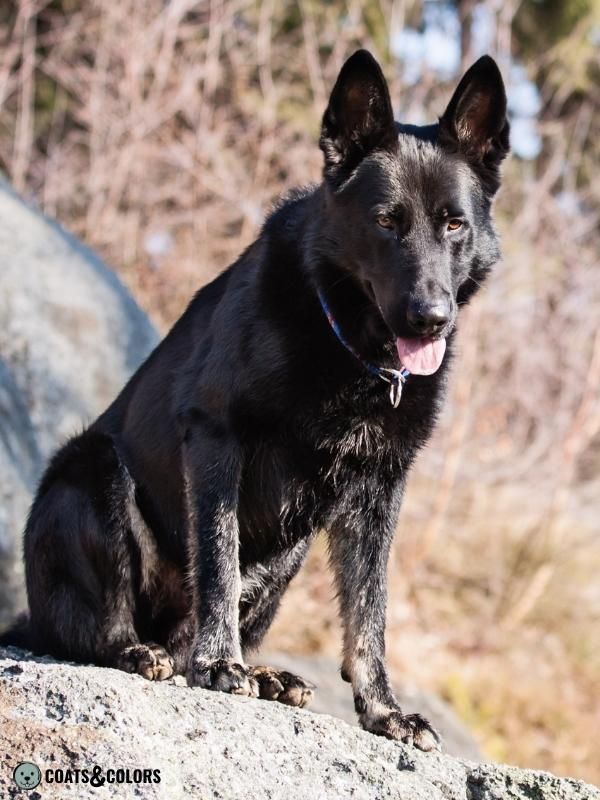
And there are some other traits that can change a recessive black dog’s looks:
Recessive Black Colors
When talking about coat color genetics black often is used as an umbrella term for all the colors eumelanin can have.
A recessive black dog can be black, but can also be liver, blue or lilac. The actual shade of eumelanin for a particular dog depends on its B-Locus and D-Locus.
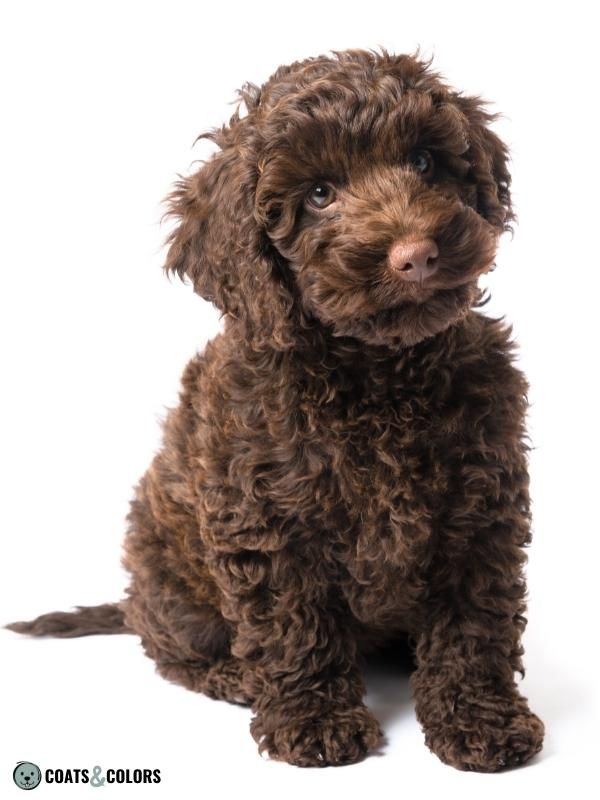
Some examples of this coloration may be found in solid blue or liver-colored Mudis or German Shepherd Dogs.
Recessive Black and White
White spotting can create areas where the coat is not pigmented at all. This creates a black and white (or blue and white etc.) pattern. Bi-black Shetland Sheepdogs are a common example of this.
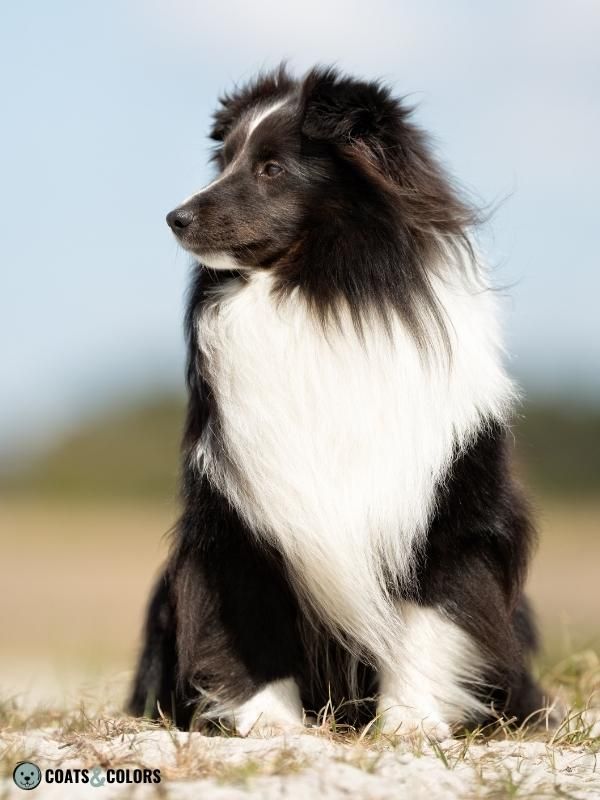
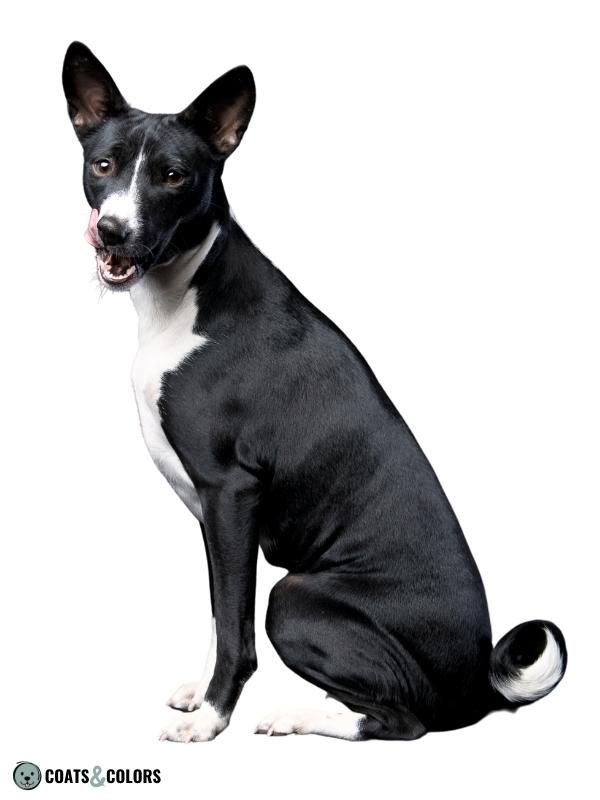
Recessive Black and Ticking
In some dog breeds white spotting will develop ticking or roan.
These spots show the color a certain area would have had without the white. So on a recessive black dog, all ticking or roan will be black (or brown on a brown dog etc.).
This is a common pattern in many hunting dogs, e.g. roan in Wirehaired Pointing Griffons.
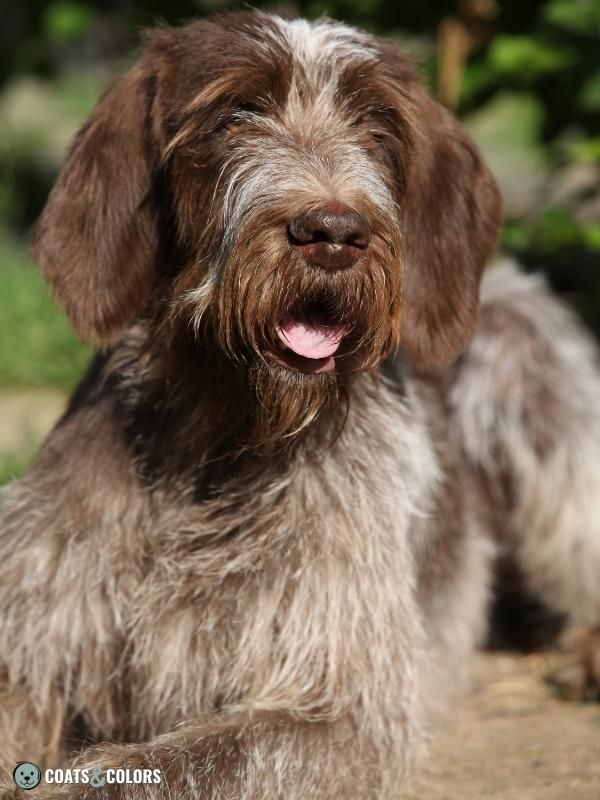
Recessive Black and Merle
Merle can cause a variety of patterns by deleting some of the eumelanin a dog would normally produce. There are not many breeds that can produce both traits at the same time like bi-black merle Shelties.
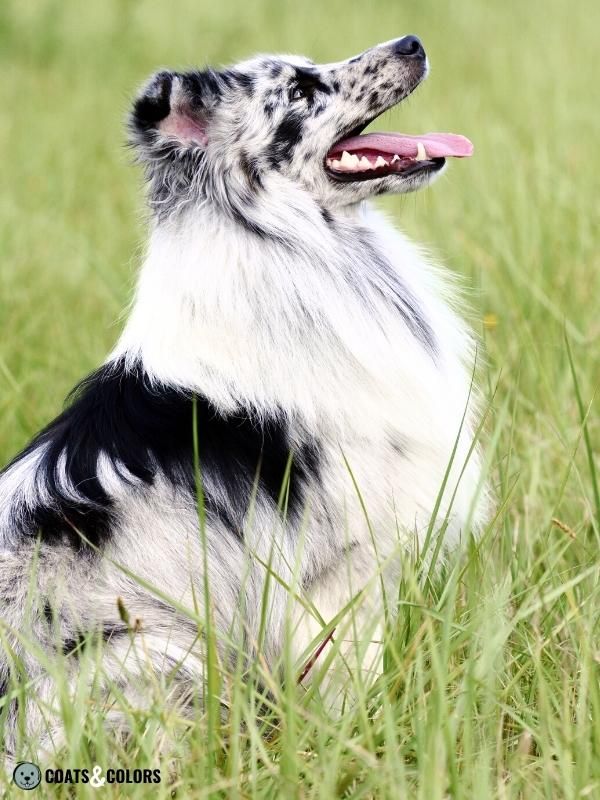
Recessive Black and Greying
Greying causes eumelanin to fade to grey or beige depending on the original color. This usually happens in dogs with longer, bearded wiry or curly coats like in Poodles or Pumis.
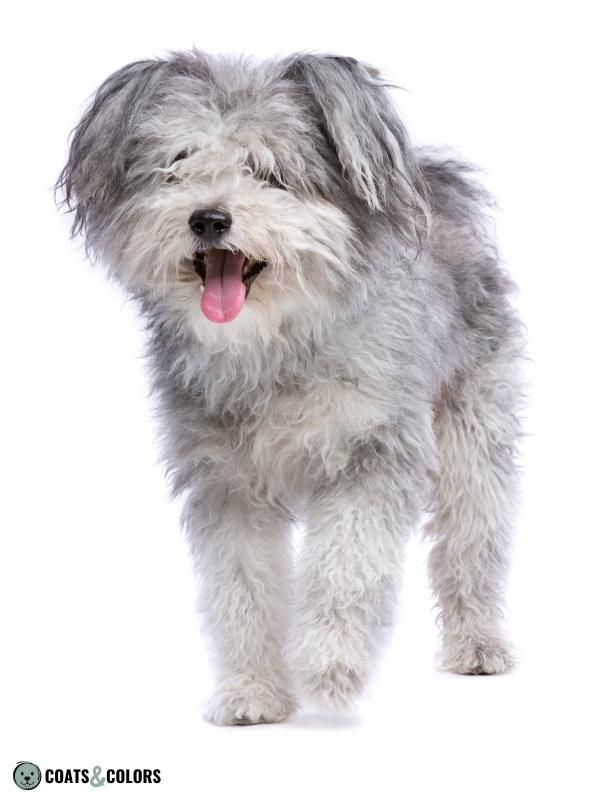
Recessive Black and Domino
Domino variants at the E-Locus known as ancient domino or grizzle domino reduce eumelanin production in any given pattern.
A recessive black dog with domino will express some phaeomelanin which can resemble an agouti pattern or look like greyish smutty tan points.
This misleading coloration can be found in some northern breeds like Finnish Lapphund or Lapponian Herder.
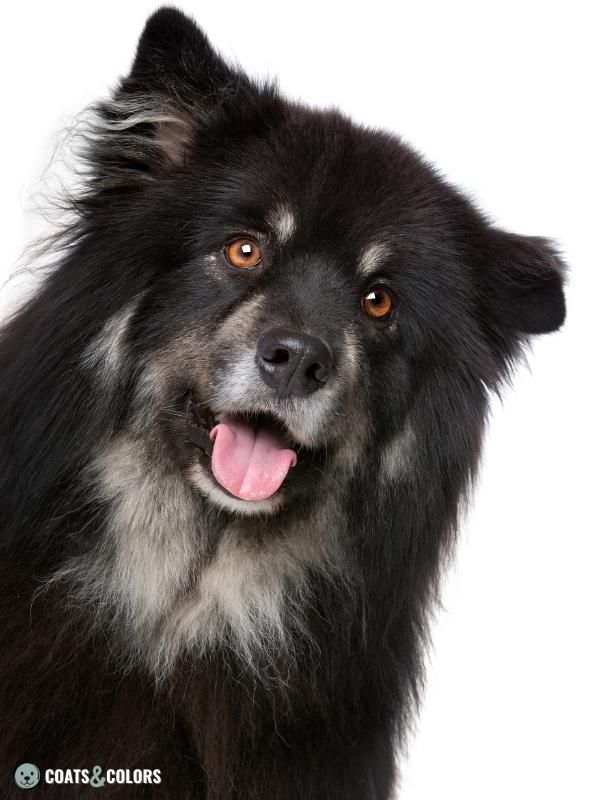
Dog Breeds with Recessive Black
A recessive red dog can’t express eumelanin even if he is recessive black at the A-Locus.
And a dominant black dog is already solid black. All in all recessive black is quite rare and can not be distinguished from dominant black just by looking at the dog.
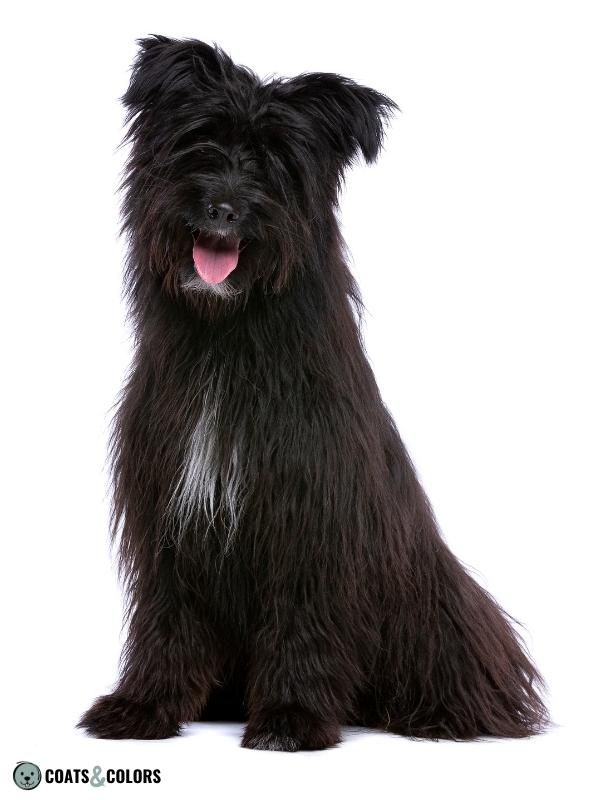
There are many breeds with recessive black in their gene pool (e.g. Samoyeds, American Eskimo, or Golden Retrievers) but the actual phenotype will only be expressed in breeds that can also be kbr/- or ky/ky:
- Affenpinscher
- Alaskan Klee Kai
- Altdeutscher Hütehund
- American Bully
- Australian Shepherd
- Basenji
- Belgian Shepherd Dog
- Catahoula Leopard Dog
- Central Asian Shepherd Dog
- Cocker Spaniel
- English Springer Spaniel
- Eurasier
- Field Spaniel
- Finnish Lapphund
- German Shepherd Dog
- German Spitz
- Icelandic Sheepdog
- Irish Wolfhound
- Lagotto Romagnolo
- Lapponian Herder
- Mexican Hairless Dog
- Mudi
- Neapolitan Mastiff
- Papillon
- Poodle
- Pomeranian
- Puli
- Pumi
- Scottish Terrier
- Sheltie
- Small Münsterlander
- Swedish Vallhund
- Tibetan Mastiff
- Tibetan Terrier
- Wirehaired Pointing Griffon
Learn More
Links
[1] Bannasch, D.L., Kaelin, C.B., Letko, A. et al. Dog colour patterns explained by modular promoters of ancient canid origin. Nat Ecol Evol 5, 1415–1423 (2021). https://doi.org/10.1038/s41559-021-01524-x
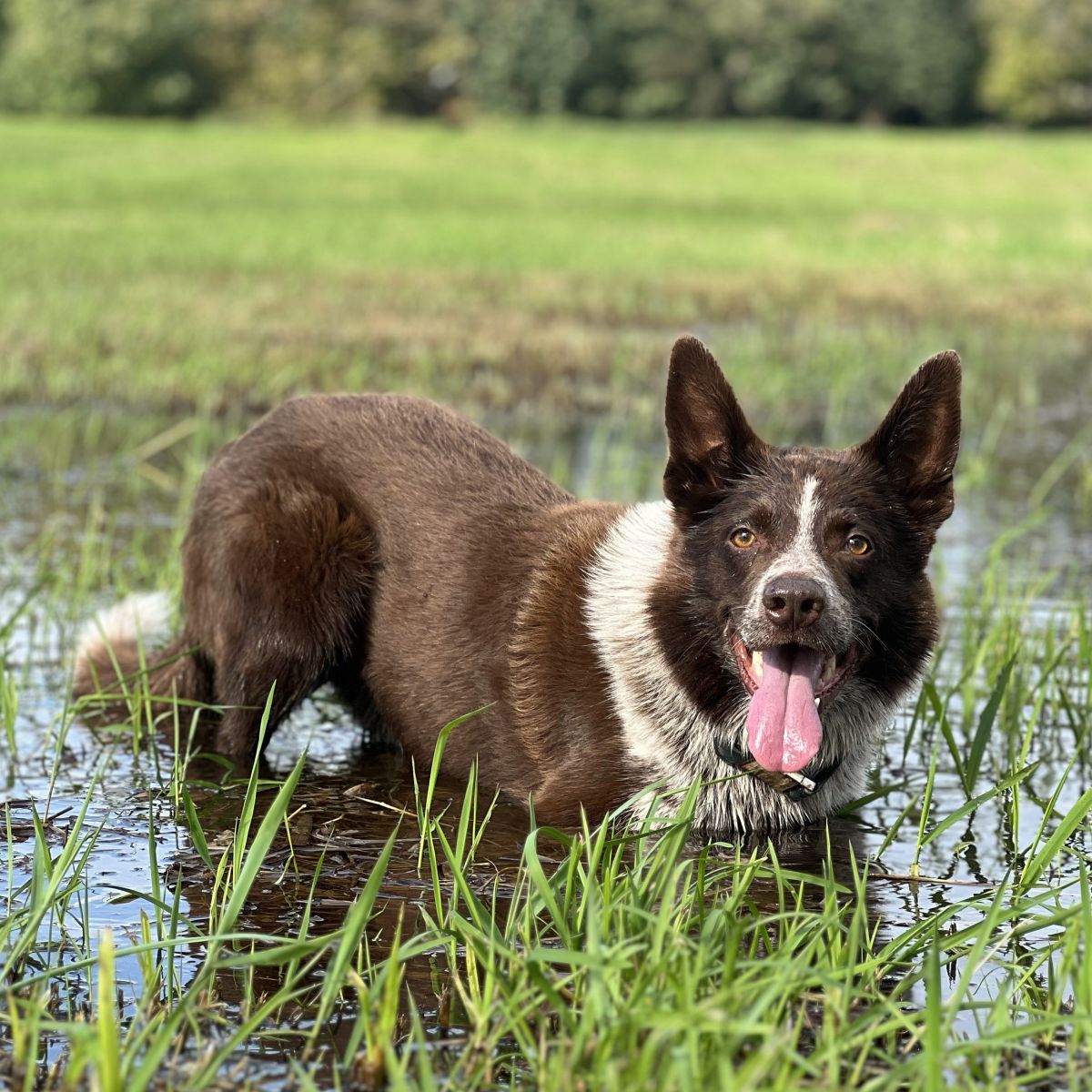
Hi! I’m Steffi. I am a biologist and a big time dog nerd. You are curious about coat color genetics? You’ve come to the right place! Read more.


